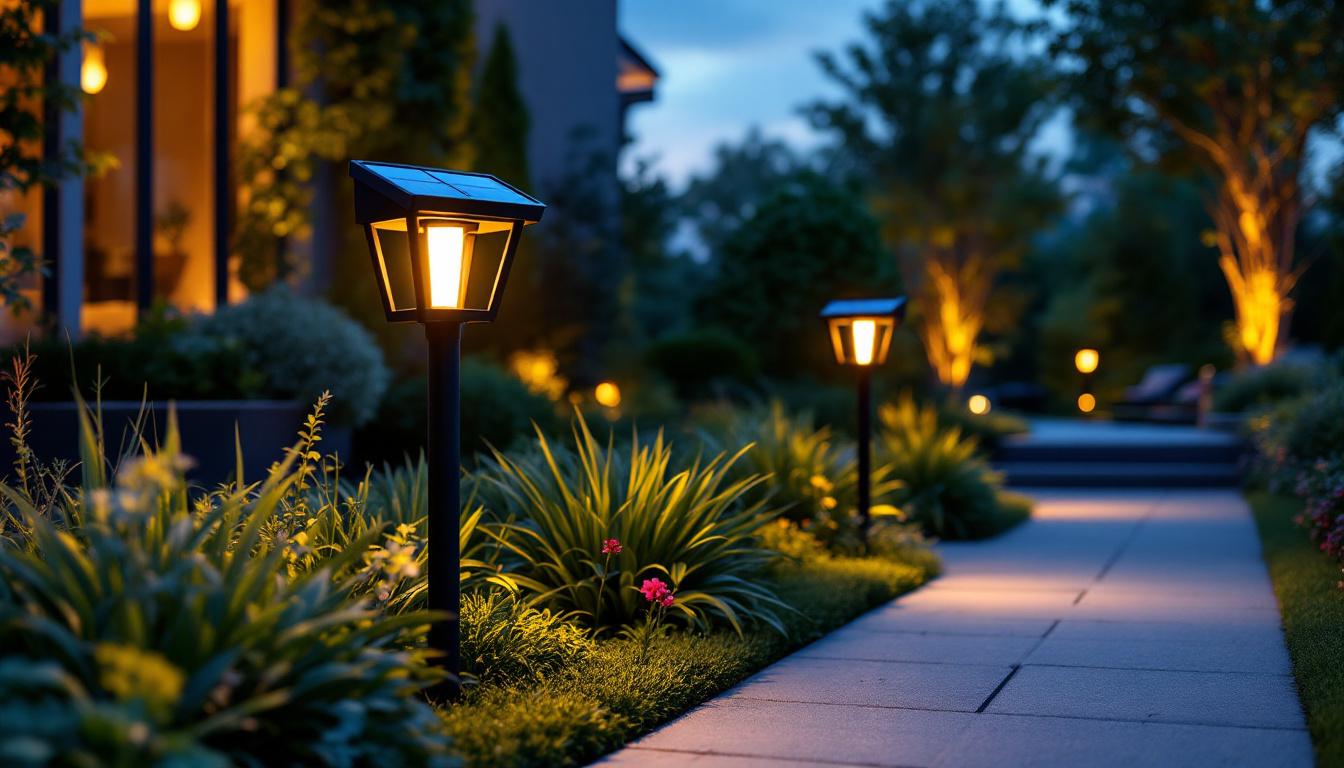
Lighting contractors play a crucial role in shaping the ambiance and functionality of spaces through effective lighting design and installation. However, even seasoned professionals can encounter pitfalls that may compromise the quality of their work. Understanding these common mistakes can help contractors enhance their services, improve client satisfaction, and ultimately lead to successful projects. This article delves into seven prevalent mistakes made by lighting contractors, offering insights on how to avoid them.
One of the most significant mistakes lighting contractors make is diving into projects without thorough planning and design. Rushing into installation can lead to inefficient lighting layouts that do not meet the client’s needs or expectations.
Effective planning involves understanding the space, the purpose of the lighting, and the specific requirements of the client. Whether it’s a residential or commercial project, taking the time to create a detailed lighting plan can prevent costly revisions later on. Additionally, a well-structured approach allows for the integration of energy-efficient solutions that can save clients money in the long run, making the project not only aesthetically pleasing but also economically viable.
Every client has unique preferences and requirements. Engaging in comprehensive discussions with clients about their vision, lifestyle, and functional needs can help tailor the lighting design to their expectations. This dialogue ensures that the contractor is aligned with the client’s goals from the outset. Furthermore, understanding the client’s daily routines and how they interact with the space can lead to innovative lighting solutions that enhance usability and comfort. For instance, a family with young children may prioritize safety and durability, while a professional workspace may require adjustable lighting to accommodate various tasks.
Each space presents its own challenges and opportunities. Factors such as the size of the room, the height of the ceilings, and the color of the walls can significantly influence lighting choices. A well-thought-out design considers these elements to create a harmonious and effective lighting scheme. Moreover, the architectural features of the space, such as windows, doorways, and built-in furniture, should also be factored into the lighting plan. Natural light can play a crucial role in how a space feels, and balancing artificial lighting with daylight can create a more inviting atmosphere. For example, strategically placed fixtures can highlight architectural details or artwork, adding depth and character to the environment while ensuring that the overall lighting remains functional and aesthetically pleasing.
Layered lighting is essential for creating depth and dimension in any space. Many contractors make the mistake of relying solely on one type of lighting, such as ambient lighting, which can result in flat and uninspiring environments.
To achieve a well-balanced lighting design, it’s crucial to incorporate three types of lighting: ambient, task, and accent. Each layer serves a distinct purpose and, when combined, they enhance the overall aesthetic and functionality of the space.
Ambient lighting provides the overall illumination of a room. It sets the foundation for the lighting scheme and should be evenly distributed to avoid dark spots. Ceiling fixtures, recessed lights, and wall sconces are common sources of ambient lighting.
Task lighting is designed to illuminate specific areas where activities take place, such as reading, cooking, or working. Incorporating adjustable fixtures, such as desk lamps or under-cabinet lighting, can enhance the usability of a space while also adding to its visual appeal.
Accent lighting adds drama and interest by highlighting architectural features, artwork, or decorative elements. This layer of lighting can transform a standard room into a captivating space, drawing attention to focal points and enhancing the overall design.
In today’s environmentally conscious world, energy efficiency is a critical consideration for any lighting project. Contractors who overlook this aspect may not only contribute to higher energy costs for their clients but also miss out on potential incentives and rebates for energy-efficient designs.
Utilizing LED fixtures, smart lighting controls, and energy-efficient bulbs can significantly reduce energy consumption and enhance the sustainability of a project. Moreover, educating clients about the benefits of energy-efficient lighting can lead to informed decisions that align with their values.
When selecting fixtures, contractors should prioritize energy-efficient options that provide the desired light output without excessive energy use. LEDs, for example, consume significantly less energy than traditional incandescent bulbs and have a longer lifespan, making them a cost-effective choice in the long run.
Smart lighting controls allow for greater flexibility and efficiency in managing lighting systems. Features such as dimmers, timers, and motion sensors can help optimize energy use while also providing convenience for the client. Integrating these technologies into lighting designs can enhance the overall user experience.
Installation is a critical phase in any lighting project. Neglecting proper installation techniques can lead to a host of issues, including safety hazards, subpar performance, and premature fixture failure.
Contractors should adhere to industry standards and best practices during installation to ensure that all fixtures are securely mounted and properly wired. This attention to detail not only enhances the safety and functionality of the lighting system but also reflects professionalism and expertise.
Compliance with local electrical codes is non-negotiable. These codes are designed to ensure safety and reliability in electrical installations. Contractors must stay informed about the latest regulations and ensure that their work meets or exceeds these standards.
After installation, testing the lighting system is essential. This includes checking for proper functionality, adjusting angles, and ensuring that the light distribution meets the design specifications. Taking the time to fine-tune the installation can prevent future issues and enhance client satisfaction.
Lighting systems require ongoing maintenance to ensure optimal performance and longevity. Contractors who neglect to discuss maintenance needs with clients may leave them unprepared for future upkeep, leading to dissatisfaction and potential issues down the line.
Providing clients with information about the maintenance requirements of their lighting systems can foster a sense of responsibility and ownership. This proactive approach not only enhances the client relationship but also ensures that the lighting continues to perform well over time.
Contractors should take the time to educate clients about the maintenance needs of their lighting systems. This can include guidance on cleaning fixtures, replacing bulbs, and addressing any technical issues that may arise. Providing this information empowers clients to take an active role in the care of their lighting installations.
Consider offering maintenance services as part of your business model. Regular check-ups and maintenance can help identify potential issues before they escalate, ensuring that clients’ lighting systems remain in top condition. This additional service can also create a recurring revenue stream for contractors.
Color temperature plays a vital role in the overall mood and functionality of a space. Many contractors underestimate its importance, leading to lighting choices that do not align with the intended atmosphere or purpose of the area.
Understanding the difference between warm, neutral, and cool color temperatures can help contractors make informed decisions that enhance the aesthetic appeal of a space. Each color temperature evokes different feelings and can significantly influence how a room is perceived.
Warm lighting (typically around 2700K to 3000K) creates a cozy and inviting atmosphere, making it ideal for residential spaces such as living rooms and bedrooms. In contrast, cool lighting (above 4000K) is often used in workspaces, kitchens, and bathrooms, where clarity and focus are essential.
Contractors should consider the specific function of each space when selecting color temperatures. For example, a restaurant may benefit from warm lighting to create an intimate dining experience, while a retail store might opt for cooler lighting to enhance product visibility. Tailoring the color temperature to the purpose of the space can significantly enhance the overall design.
Effective communication and collaboration are key components of successful lighting projects. Contractors who fail to engage with clients, architects, and other stakeholders may encounter misunderstandings that can derail a project.
Establishing open lines of communication from the beginning fosters a collaborative environment where ideas can be shared, and concerns can be addressed promptly. This proactive approach not only enhances the quality of the project but also strengthens relationships with clients and partners.
Keeping clients informed throughout the project is essential. Regular updates on progress, challenges, and changes ensure that clients feel involved and valued. This transparency can lead to greater trust and satisfaction with the final outcome.
Lighting contractors often work alongside architects, interior designers, and electricians. Establishing a collaborative relationship with these professionals can lead to more cohesive designs and smoother project execution. Regular meetings and discussions can help align everyone’s goals and expectations.
Avoiding common mistakes in lighting design and installation is crucial for lighting contractors seeking to enhance their services and client satisfaction. By prioritizing thorough planning, layered lighting, energy efficiency, proper installation techniques, maintenance considerations, color temperature awareness, and effective communication, contractors can elevate their projects to new heights.
In an industry where aesthetics and functionality are paramount, understanding and addressing these common pitfalls can lead to successful outcomes and lasting relationships with clients. By continuously striving for excellence, lighting contractors can ensure that their work not only illuminates spaces but also enriches the lives of those who inhabit them.
Ready to avoid these common lighting mistakes and take your projects to the next level? Choose LumenWholesale for your lighting needs and benefit from our spec-grade products at unbeatable wholesale prices. Our commitment to quality and affordability ensures that you can deliver exceptional lighting designs without the burden of inflated costs. With free shipping on bulk orders, you can trust that you’re getting the best value for your investment. Elevate your lighting installations today by visiting Wholesale Lighting at the Best Value and experience the LumenWholesale difference.

Discover the essential guide for lighting contractors on selecting the perfect T5 Ho bulbs.

Discover the latest black outdoor solar lights trends every lighting contractor must know.

Discover the benefits of high wattage LED lamps in our Lighting Contractor Edition—learn how they enhance brightness, energy efficiency, and cost savings.

Discover why pendent lights are an essential tool in every lighting contractor’s arsenal.